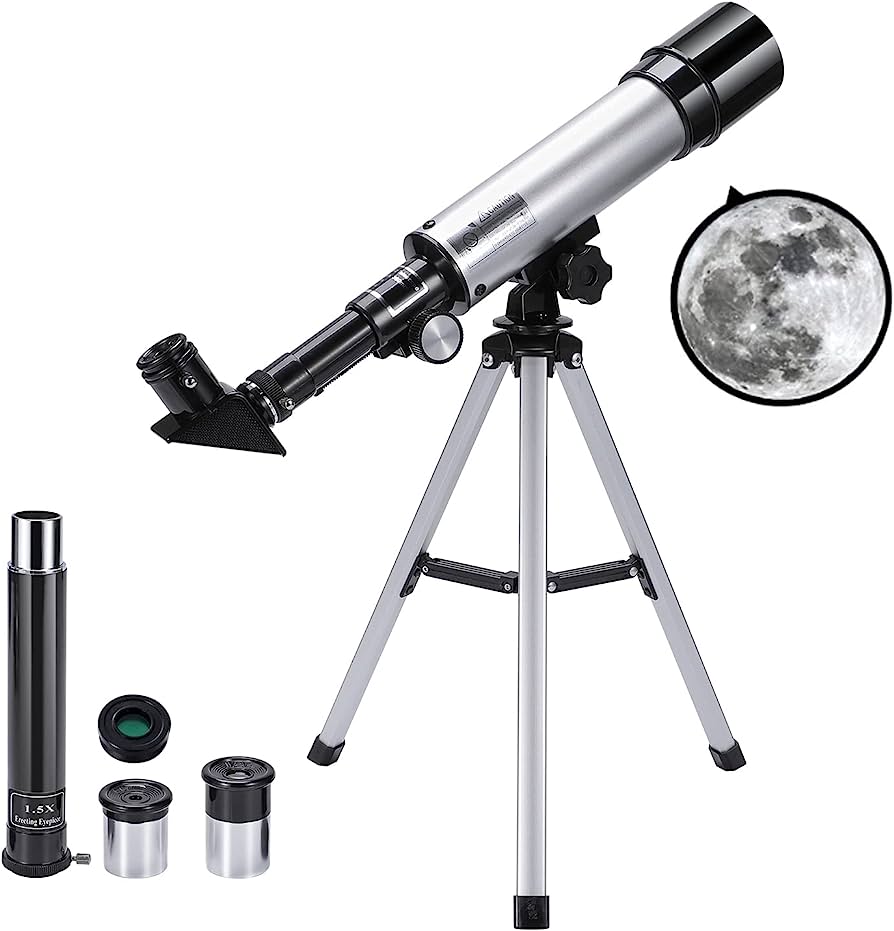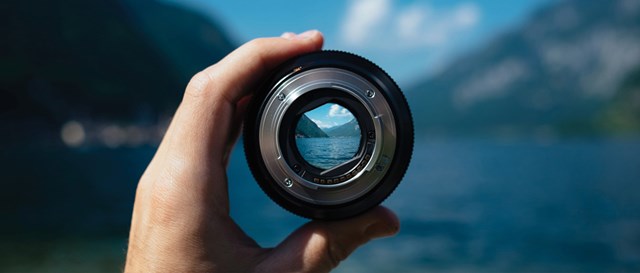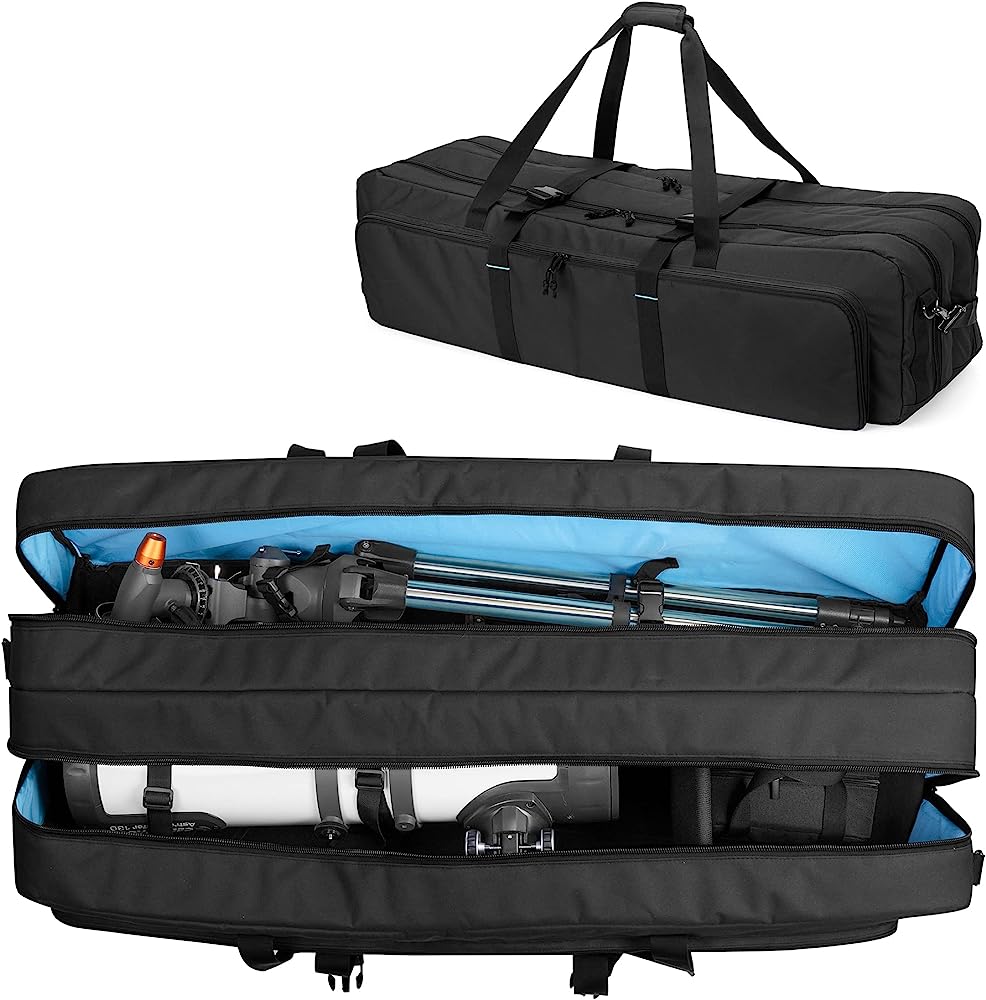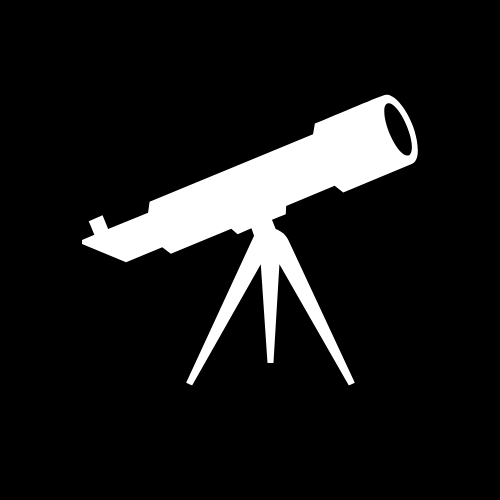Telescope Cleaning & Maintenance
In the fascinating world of astronomy, telescopes serve as our windows to the cosmos, enabling us to explore the mysteries of the universe from our own backyards. However, to ensure these instruments continue to provide clear and accurate views, regular maintenance and cleaning are essential. This article is designed to guide you through the process of keeping your telescope in optimal condition. We will delve into the crucial aspects of telescope maintenance, discuss the delicate task of cleaning telescope mirrors and lenses, explore how to care for the mount and tripod, and finally, provide tips on proper telescope storage. By following these guidelines, you can prolong the life of your telescope and enhance your stargazing experience.

Telescope Maintenance
Maintaining your telescope is a crucial aspect of ensuring its longevity and performance. Regular maintenance not only keeps your telescope functioning optimally but also helps prevent damage that could compromise your viewing experience.
It’s important to conduct a visual inspection of your telescope regularly. Look for any signs of wear and tear, such as loose screws, fraying cables, or any other physical damage. If you notice anything unusual, it’s best to address the issue promptly to prevent further damage.
Keep your telescope dust-free. Dust can accumulate on the telescope’s body and gradually make its way to the optics, affecting the clarity of your views. Use a soft brush or compressed air to gently remove dust from the telescope’s body.
Avoid touching the optics as much as possible. Our fingers contain oils that can leave smudges on the optics, affecting the quality of the images. If you must touch the optics, ensure your hands are clean and preferably use gloves.
It’s also essential to keep your telescope’s mechanical parts, such as the focuser and mount, well-lubricated. Over time, these parts can become stiff due to exposure to the elements. Use a high-quality lubricant suitable for telescopes to ensure smooth operation.
Remember, regular maintenance is the key to keeping your telescope in top shape. By taking the time to care for your telescope, you can ensure it continues to provide you with clear and stunning views of the cosmos.
Cleaning Telescope Mirrors
The mirrors in a telescope are delicate and require careful handling when cleaning. Accumulated dust and grime can degrade the quality of the images you observe. However, it’s important to note that cleaning should only be done when absolutely necessary, as excessive or improper cleaning can damage the mirror’s surface and coatings.

Before you start, ensure you have the right tools. You’ll need distilled water, isopropyl alcohol, a soft brush, lint-free optical wipes, and a blower bulb.
Here are the steps to clean your telescope mirrors:
- Remove Dust: Use the blower bulb to gently remove loose dust particles from the mirror’s surface. Avoid touching the mirror with your hands or any hard objects.
- Prepare Cleaning Solution: Mix distilled water and isopropyl alcohol in a 50:50 ratio. This solution will help remove stubborn dirt and smudges without damaging the mirror.
- Gentle Cleaning: Dip the soft brush into the solution and lightly sweep across the mirror’s surface. Start from the center and move outwards in a radial pattern. Be careful not to apply too much pressure.
- Rinse and Dry: Rinse the mirror thoroughly with distilled water to remove any residue from the cleaning solution. Then, use lint-free optical wipes to gently dab the mirror dry. Avoid rubbing the mirror as it can cause scratches.
- Reassemble: Once the mirror is completely dry, carefully reassemble your telescope.
Cleaning Telescope Lenses
Just like mirrors, the lenses of a telescope are delicate and require careful cleaning. Dust, fingerprints, or other forms of dirt can interfere with the clarity of your observations. However, cleaning should only be done when necessary, as improper cleaning can scratch or otherwise damage the lenses.
To clean your telescope lenses, you will need a blower bulb, a soft camel hair brush, lens cleaning solution or isopropyl alcohol, and microfiber or lens cleaning tissue.
Here are the steps to clean your telescope lenses:

- Remove Loose Dust: Use the blower bulb to gently blow away any loose dust particles from the lens surface. This helps to prevent scratching the lens in the subsequent steps.
- Brush Off Remaining Dust: Use a soft camel hair brush to gently brush off any remaining dust. Start from the center of the lens and move outwards in a circular motion.
- Apply Cleaning Solution: Put a few drops of lens cleaning solution or isopropyl alcohol on a piece of lens cleaning tissue or microfiber cloth. Never apply the solution directly onto the lens.
- Clean the Lens: Gently wipe the lens with the dampened tissue or cloth, starting from the center and moving outwards in a spiral pattern. This method ensures that any debris is moved out and away from the lens rather than being circulated around it.
- Dry the Lens: Allow the lens to air dry. Do not try to speed up the process by wiping or rubbing the lens, as this could cause scratches.
The key to cleaning telescope lenses is to be gentle and patient. Rushing the process or using inappropriate cleaning materials can lead to permanent damage. By taking proper care of your telescope lenses, you can ensure clear and crisp stargazing experiences.
Mount and Tripod Maintenance
The mount and tripod of your telescope are just as important as the optics. They provide the stability needed for precise tracking and viewing. Regular maintenance ensures their smooth operation and longevity.
Here are some tips for maintaining your telescope’s mount and tripod:
- Regular Inspection: Regularly inspect the mount and tripod for any signs of wear or damage. Check for loose screws, worn-out parts, or any signs of rust or corrosion. Address any issues promptly to prevent further damage.
- Cleaning: Keep the mount and tripod clean. Dust and dirt can get into the moving parts and cause wear over time. Use a soft brush or cloth to wipe away any dust or dirt. For stubborn grime, use a mild soap solution, but ensure all parts are thoroughly dried afterwards to prevent rusting.
- Lubrication: The moving parts of the mount, such as gears and bearings, should be kept well-lubricated to ensure smooth operation. Use a high-quality lubricant suitable for mechanical parts. Be careful not to over-lubricate, as this can attract dust and dirt.
- Storage: When not in use, store the mount and tripod in a dry and clean place. If possible, use a cover to protect them from dust.
- Balancing: Regularly check the balance of your mount and telescope. An unbalanced setup can put unnecessary strain on the mount’s motors and gears.
- Avoid Overloading: Each mount is designed to carry a certain weight. Avoid overloading the mount with heavy accessories as this can strain the mount and affect its performance.
By taking the time to properly maintain your telescope’s mount and tripod, you can ensure a stable and smooth stargazing experience.
Common maintenance tasks for telescopes
| Maintenance Task | Description | Frequency | Tips & Precautions |
|---|---|---|---|
| Lens/Mirror Cleaning | Removing dust and smudges from optical surfaces. | As needed | Use a soft brush or compressed air for dust, lens cleaning solution for smudges. |
| Collimation | Alignment of the telescope’s optics. | Periodically | Especially important for reflector telescopes. Use a collimation tool. |
| Mechanical Parts Check | Inspecting and tightening loose components. | Every few months | Check screws, knobs, and mount stability. |
| Lubrication | Lubricating moving parts. | Annually | Use appropriate lubricant for smooth operation without attracting dust. |
| Storage | Properly storing the telescope. | After each use | Store in a dry, dust-free area, preferably with a cover. |
| Dew Prevention | Handling dew formation on the telescope. | As needed | Use dew shields or heaters in damp conditions. |
| Software Updates | Updating GoTo telescope firmware. | As released | Keep the software updated for optimal performance. |
Telescope Storage
Proper storage of your telescope is crucial for its longevity and performance. It protects your telescope from dust, moisture, and accidental damage when it’s not in use. Here are some tips for storing your telescope correctly:

- Clean Before Storage: Always clean your telescope before storing it. Remove any dust or dirt from the body, lenses, and mirrors. Ensure all parts are dry to prevent the growth of mold or fungus.
- Cap the Optics: Always put the dust caps on the telescope’s lenses and mirrors before storage. This protects the optics from dust and accidental scratches.
- Disassemble If Necessary: If your telescope is large or if you’re storing it for a long period, consider disassembling it. Store the optics, mount, and tripod separately. This can help prevent strain on the mount and accidental damage to the optics.
- Use a Telescope Cover or Case: If possible, store your telescope in a case or cover it with a telescope cover. This provides an extra layer of protection against dust and moisture.
- Choose the Right Environment: Store your telescope in a dry, clean, and temperature-controlled environment. Avoid places with high humidity or extreme temperatures, as these can damage the telescope’s optics and mechanical parts.
- Avoid Sunlight: Never store your telescope in direct sunlight. The UV rays can damage the telescope’s coatings and plastics.
- Store Horizontally: If possible, store your telescope horizontally. This helps prevent dust from settling on the optics.
Maintaining Eyepieces and Accessories
Eyepieces and other telescope accessories, like filters and Barlow lenses, are integral parts of your stargazing setup. They require as much care and attention as your telescope itself. Here are some tips to help you maintain these components:
- Regular Inspection: Regularly inspect your eyepieces and other accessories for any signs of wear, damage, or dirt. This includes checking the coatings on the lenses for scratches or degradation.
- Cleaning Eyepieces: Cleaning eyepieces is similar to cleaning your telescope lenses. Use a blower bulb to remove loose dust, then gently clean the lens with a lens cleaning solution or isopropyl alcohol applied to a microfiber cloth or lens cleaning tissue. Remember to clean both the eye lens and the field lens.
- Cleaning Filters: Filters can be cleaned in the same way as eyepieces. However, be extra careful as some filters have very delicate coatings that can be easily damaged.
- Handling: Always handle eyepieces and accessories with clean hands. When inserting or removing an eyepiece, hold it by the barrel to avoid touching the glass surfaces.
- Storage: Store eyepieces and other accessories in a clean, dry place. Many astronomers use specially designed cases with individual compartments for each eyepiece or accessory. Always replace the caps on both ends of an eyepiece when not in use.
- Avoid Rapid Temperature Changes: Just like your telescope, eyepieces and accessories should be allowed to acclimate to outdoor temperatures before use. Rapid temperature changes can cause condensation to form on the lenses.
By properly maintaining your eyepieces and accessories, you can ensure they continue to provide clear, sharp views and serve you well for many years of observing.
Seasonal Maintenance
Different seasons bring different challenges for telescope maintenance. From the heat of summer to the cold of winter, your telescope needs to be cared for appropriately to ensure its longevity and performance. Here’s a guide to seasonal maintenance:
- Spring and Summer: During these warmer months, heat and humidity can be a concern. Avoid leaving your telescope in direct sunlight, as it can cause overheating and damage the optical components. If you’re observing on a particularly humid night, be aware that dew can form on your optics. Consider using a dew shield or dew heaters to prevent this. After observing, allow your telescope to dry thoroughly before storing it to prevent mold and fungus growth.
- Autumn and Winter: In colder months, condensation can be a major issue. When bringing your telescope in from the cold, allow it to warm up slowly to room temperature to prevent condensation from forming on the optics. If condensation does form, let it evaporate naturally rather than trying to wipe it off, which can cause smears or scratches. Also, remember to keep your equipment well-lubricated, as some lubricants can thicken in cold weather, causing the mount to move less smoothly.
- All Seasons: Regardless of the season, always store your telescope in a dry, temperature-controlled environment when not in use. Regularly clean and inspect your telescope and its accessories, and keep them covered when not in use to protect against dust and dirt.
Preventive Measures
Prevention is always better than cure, and this holds true for telescope maintenance as well. Taking a few simple preventive measures can help you avoid many common issues and prolong the life of your telescope. Here are some tips:
- Use Lens Caps: Always replace the lens caps on your telescope and eyepieces when they’re not in use. This simple step can protect your optics from dust, scratches, and other potential damage.
- Handle with Care: Always handle your telescope and its accessories with care. Avoid touching the glass surfaces of lenses and mirrors, and be careful not to drop or knock your equipment.
- Avoid Extreme Temperatures: Try not to expose your telescope to extreme temperatures. If your telescope does get very hot or cold, allow it to return to room temperature gradually to avoid condensation or thermal stress.
- Keep it Dry: Avoid using your telescope in the rain or fog, as moisture can damage both the optics and the mechanical parts. If your telescope does get wet, dry it thoroughly as soon as possible.
- Store Properly: When not in use, store your telescope in a clean, dry, and temperature-controlled environment. Use a telescope cover or case for added protection.
- Regular Maintenance: Regular cleaning and maintenance can prevent many problems from developing. This includes cleaning the optics only when necessary, keeping the mechanical parts well-lubricated, and regularly inspecting your equipment for any signs of wear or damage.
When to Seek Professional Help
While regular maintenance and cleaning can keep your telescope in good working order, there may be times when professional help is needed. Here are some situations where it might be best to consult a professional:
- Optical Issues: If you notice persistent issues with your telescope’s optics, such as blurry images or dark spots, that aren’t resolved by cleaning, it might be a sign of more serious problems like misalignment or damage to the optical coatings.
- Mechanical Problems: If your telescope’s mount or focuser is not moving smoothly or if you notice any unusual sounds, it could indicate a mechanical issue that needs professional attention.
- Electronic Troubles: For computerized or motorized telescopes, any persistent issues with tracking, alignment, or other electronic features should be addressed by a professional.
- Major Cleaning: If your telescope needs a major cleaning, such as removing a large amount of mold or fungus, it’s best to let a professional handle it to avoid damaging the optics.
- Repairs and Replacements: If your telescope needs parts repaired or replaced, a professional can ensure that the work is done correctly and safely.
Remember, while regular maintenance can prevent many issues, don’t hesitate to seek professional help when needed. It’s better to invest in professional repair or cleaning than to risk further damage by trying to handle complex issues on your own.
FAQ Section for “Telescope Cleaning & Maintenance”
How Often Should I Clean My Telescope’s Lens/Mirror?
Clean as needed. Frequent cleaning isn’t necessary and can risk damaging the optics.
What’s the Best Way to Clean Telescope Optics?
Use a soft brush or compressed air for dust. For smudges, apply a lens cleaning solution gently with a microfiber cloth.
Why is Collimation Important for Telescopes?
Proper collimation ensures that the telescope’s optics are aligned for optimal image quality.
How Do I Protect My Telescope from Dew?
Use a dew shield or heaters, especially in damp conditions.
Is it Necessary to Lubricate a Telescope?
Yes, annual lubrication of moving parts can keep the mechanism smooth.
What Should I Avoid When Cleaning My Telescope?
Avoid touching the optics with your fingers and using regular household cleaning products.
Can the Wrong Storage Conditions Affect My Telescope?
Yes, storing in a damp or dusty environment can cause damage. Always store in a dry, clean place.
How Important is Firmware Update for Computerized Telescopes?
Keeping software updated is crucial for the best performance and new features.
